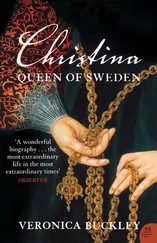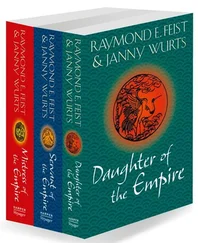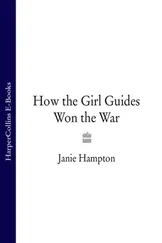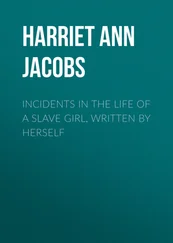The Venetian ambassador had already asserted Roxelana’s Ruthenian roots twelve years earlier. By the Lithuanian’s time, however, she was acquiring recognition as an influential figure in the capital, adding stature to her reputation as the concubine who had seduced the mighty sultan. Moreover, she was now married to him, her influence at court secured. With affirmation by their own envoy of this rising star’s origins, Polish authorities could envision scenarios in which Roxelana might be useful in keeping peace between Sigismund and Suleyman. For Sigismund had a delicate diplomatic balance to maintain.
On the one hand, the Tatars ravaged his lands. Adding insult to injury, they also demanded payment of an annual tribute, as they did from Muscovy. Not to pay was to risk the loss of greater numbers of countrymen and women to the slavers (Ivan IV, “the Terrible,” ruler of Muscovy, was so strapped for funds to ransom captives that in 1535 he asked monasteries to donate their silver to the cause). [28] Fisher, Crimean Tatars , 27–28.
On the other hand, peace on the Polish-Ottoman frontier was a sine qua non for Sigismund. Even though the Ottomans regarded the Crimean Khanate as their ally, it was ultimately less risky for Poland to channel moral outrage at the Tatars. After all, the Ottomans merely consumed slaves—the Tatars manufactured them.
It is undeniable, though, that the sultans were wholly complicit in the slave trade. They openly backed the Tatar khanate of the Crimean, whose trade in captive bodies brought them revenue, and they routinely indulged their insatiable appetite for slave labor. Those same Europeans who castigated the Tatars for the suffering of Christian captives were also complicit, at least when it came to the Ottomans. What fascinated them, what they publicized, was not the dubious fate of Christian slave converts working for the sultans but rather the careers of those who rose to the top echelons of power. And so the legend of Roxelana would grow. The more famous she became, it seemed, the richer a backstory she warranted.
Almost immediately, Roxelana’s life became embroidered with fiction, for the simple reason that there was little fact to go on. In regions north of the empire, for example, the notion circulated that she was the key to the long peace that prevailed between Suleyman and Poland-Lithuania, as it was assumed to be her natal land. Ivan Novosiltsov, ambassador of Ivan the Terrible to Istanbul, claimed in 1570 that when her son Selim was born, Roxelana pleaded with Suleyman not to go to war with Lithuania because she had been born there (the story favors Selim because he was sultan during Novosiltsov’s visit). [29] Halenko, “How a Turkish Empress,” 114.
Roxelana was even more consequential in the telling of Samuel Twardowski, who composed a long poem describing the Polish embassy to Istanbul of 1622, of which he was a member. Published in Latin in 1633, the poem depicts Suleyman defending himself against the accusation of succumbing to Roxelana’s charms in maintaining his warm relations with the Polish king. Suleyman declares that his cordial dealings with the Polish king are not due to Roxelana’s allure but rather because she was herself of that royal lineage. [30] Twardowski, Legation , 225.
Twardowski was also instrumental in propagating the story that Roxelana came from the town of Rohatyn and that her father was an Orthodox priest. Turks allegedly told him as much during his stay in Istanbul. Twardowski appears to have added on his own, however, that the priest was wicked, [31] Abrahamowicz, “Roksolana,” 543.
perhaps a reflection of his Polish and Catholic prejudice toward Orthodox Ruthenians. [32] Halenko, “How a Turkish Empress,” 114.
The notion that Roxelana’s original name was Anastasia Lisowska, another fixture in the lore surrounding her, appears to have originated in Ukrainian legend and folk song. (The name Aleksandra, also attributed to her, allegedly belonged to Anastasia’s mother Leksandra.) [33] Yermolenko, “Roxolana: The Greatest Empresse,” 234.
The most recent incarnation of Roxelana, in the Turkish historical television series Muhte  em Yüzyıl [Magnificent Century], originally broadcast from 2011 to 2014, casts her as Aleksandra, daughter of a good priest, all of whose family is slain by her Tatar captors. And so she is likely to be remembered for now, for an estimated 150 million viewers worldwide have followed the series in dozens of languages. That Roxelana was and remains an object of such fascination is a testament to her extraordinary life.
em Yüzyıl [Magnificent Century], originally broadcast from 2011 to 2014, casts her as Aleksandra, daughter of a good priest, all of whose family is slain by her Tatar captors. And so she is likely to be remembered for now, for an estimated 150 million viewers worldwide have followed the series in dozens of languages. That Roxelana was and remains an object of such fascination is a testament to her extraordinary life.
ROXELANA’S RISE TO prominence and power began in the grand residence that housed the women and children of the Ottoman dynasty. The Old Palace was a world of females and eunuchs. It was there that Roxelana began to learn the ways of the Ottomans. She would live in the Old Palace for some fifteen years, until she married Suleyman and began to occupy elegant chambers in the New Palace. Even then, she kept close ties with her original Ottoman home and continued to maintain quarters there.
Located in the bustling center of the imperial city, the Old Palace served as home for the sultan’s family—his mother, his concubines, and his children. Widowed or unmarried princesses of the dynasty might also live there. In much larger numbers, the Old Palace housed select female slaves in training, a sizeable administrative staff, and the legions of female servants who ministered to the women of privilege. As a new arrival, Roxelana would encounter a bewildering array of women of different ages, statuses, and origins.
The Old Palace was a well-protected bastion. A Venetian map published ca. 1530 shows a large parklike expanse in the middle of the city surrounded by a strong circular wall. [1] The map was published by Giovanni Andrea Vavassore from an older print. Necipoğlu, Architecture , 6.
Within it lay the “seraglio vecchio,” the Old Palace, its own enclosing wall reinforced with a double watchtower. Gardens and lawns filled unoccupied spaces, relieving the fortresslike feel of the whole complex—it had originally been designed as a well-defended residence for Mehmed II after the conquest of Constantinople.
One of Roxelana’s first tasks as a novice in the Old Palace was to sort out the who’s who of its hierarchy. Mehmed’s division of the Ottoman royal household into two palaces, males in the New and females in the Old, opened up new opportunities for women to develop positions of influence. At the top of the Old Palace hierarchy was the mother of the reigning sultan, female elder of the Ottoman dynastic house. Second in command was the Lady Steward, mistress of palace operations and monitor of etiquette and ceremony. Experienced staff ran the day-to-day life of the palace, enforcing its rules of conduct and managing its finances. Some participated in the instruction and disciplining of new slaves. Trainees who showed aptitude were assigned to dress, coif, and sometimes entertain their royal mistresses. Those of lesser talent, grace, or good looks became domestic servants who fetched trays of food, stoked the fires that heated water for the hamams, tended wardrobes, and did the laundry and cleaning.
“Byzantium or Constantinople.” Giovanni Andreas di Vavassore, ca. 1530. The Old Palace is located in the center, surrounded by angled walls; the New Palace is in the lower right. European communities resided principally in Galata (Pera), to the right, separated from Istanbul proper by the Golden Horn.
Because men were not permitted in this establishment of women, eunuchs acted as its residents’ guardians as well as their intermediaries with the outside world. Eunuchs had a long history as special servants to imperial regimes, from the Chinese to the Byzantine empires. The Old Palace eunuchs supervised the female teachers who came daily to provide instruction. The eunuchs were also enforcers, monitoring the female denizens of the palace, escorting them when they ventured beyond its walls, and helping to discipline those who stepped out of line. Senior eunuchs were repositories of imperial protocol, versed in the history of the women’s domain that they helped to govern. The all-male New Palace had its own substantial eunuch corps, similarly tasked with guarding as well as supervising its residents.
Читать дальше
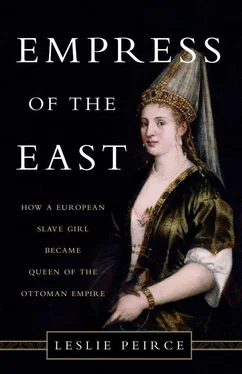
 em Yüzyıl [Magnificent Century], originally broadcast from 2011 to 2014, casts her as Aleksandra, daughter of a good priest, all of whose family is slain by her Tatar captors. And so she is likely to be remembered for now, for an estimated 150 million viewers worldwide have followed the series in dozens of languages. That Roxelana was and remains an object of such fascination is a testament to her extraordinary life.
em Yüzyıl [Magnificent Century], originally broadcast from 2011 to 2014, casts her as Aleksandra, daughter of a good priest, all of whose family is slain by her Tatar captors. And so she is likely to be remembered for now, for an estimated 150 million viewers worldwide have followed the series in dozens of languages. That Roxelana was and remains an object of such fascination is a testament to her extraordinary life.




